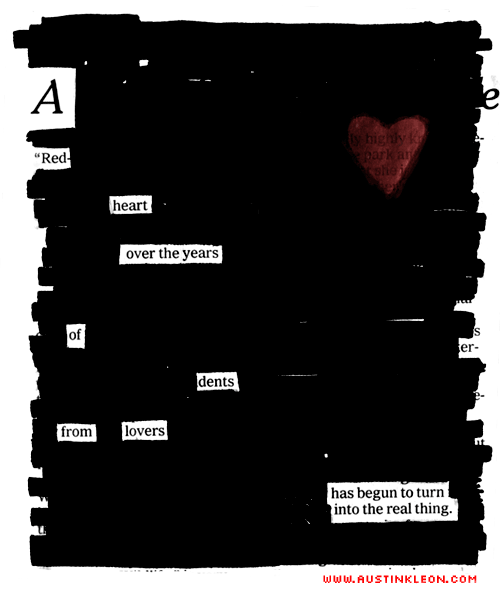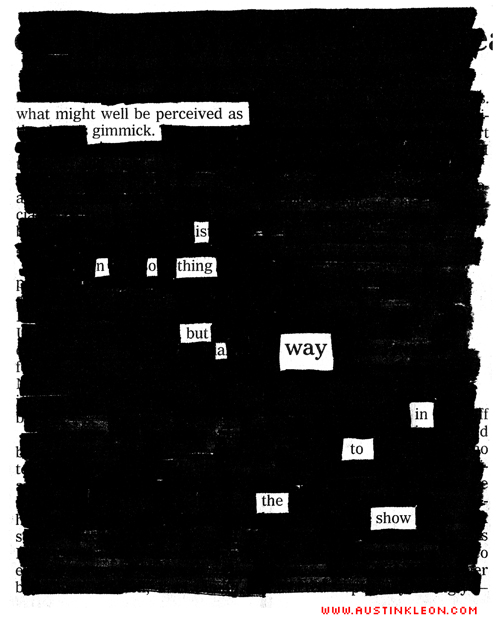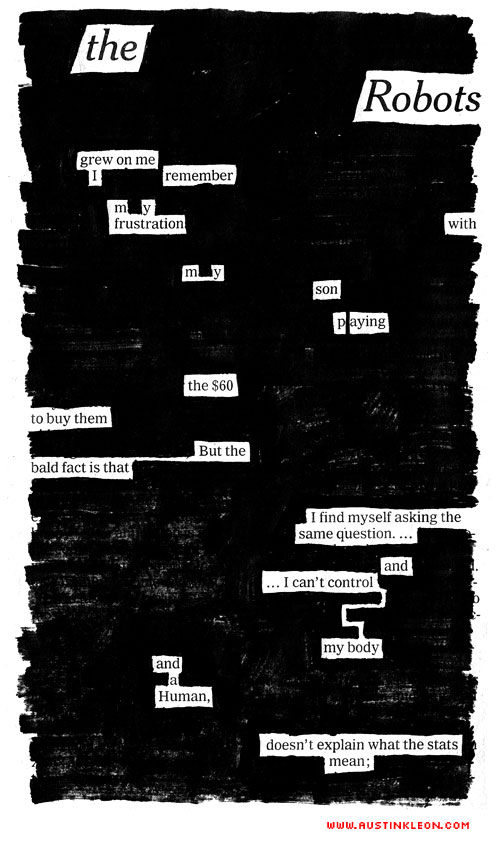
Another cut from the book.

Walter Isaacson has written a front-page article for Time Magazine entitled “How To Save Your Newspaper.” The Oklahoman is taking their own approach to getting you to buy that Sunday paper:
Think a newspaper is good only for reading, recycling or wrapping dead fish?
Think again. Think … poetry.
Newspaper Blackout Poetry is the creation of poet Austin Kleon and only requires three things: a newspaper, a black marker and your creativity. We know you’ve got it, Oklahoma, and we’re willing to put our money where our mouth is.
Grab a copy of this Sunday’s The Oklahoman at CVS and other locations and pick any story from that paper. Take a marker and black out lines from the story, leaving only the words you want to remain visible. Those words become your poetry.
Your poem can rhyme, or not. It can be a haiku. It could be a limerick (keep it clean), it could be free-form. Kleon will help us pick the winner.
Problem solved!

This one suffered the axe from the book. Just didn’t fit in to the flow…
Of note: we broke 600 fans on Facebook!
This one was cut from the book. I fit it back in!
Although we human beings have our own personal life, we are yet in large measure the representatives, the victims and promoters of a collective spirit whose years are counted in centuries. We can well think all our lives long that we are following our own noses, and may never discover that we are, for the most part, supernumeraries on the stage of the world theater.—Carl Jung, Memories, Dreams, and Reflections
This site participates in the Amazon Affiliates program, the proceeds of which keep it free for anyone to read.